Introduction
Hoshin Kanri, also known as Policy Deployment, is a systematic approach within Lean management, aimed at ensuring that the strategic goals of a company are not only clear to every employee but also that they are driving progress and action at every level of the organization. This Japanese management strategy is essential for companies that want to incorporate comprehensive reflection, setting clear objectives, and detailed planning in their annual cycles.
History and Development
Developed in Japan post-World War II, Hoshin Kanri emerged as a method to deploy organizational goals in a way that ensures both alignment and full commitment. Companies like Toyota have famously integrated it into their management systems, leading to remarkable efficiency and industry-leading innovations. The strategy has since been adopted by organizations worldwide, seeking to harness its structured approach to strategic planning and execution.
Key Principles
The core of Hoshin Kanri lies in its four primary principles: vision setting, communication, implementation, and review. A vision is established by top management, communicated effectively through the ranks, implemented via detailed action plans, and continuously reviewed and improved upon, making the process cyclic and dynamic.

When to Use the Tool
Hoshin Kanri is best utilized in scenarios where a business seeks to steer their organization towards long-term strategic goals while maintaining flexibility and responsiveness to immediate operational challenges. It’s ideal for translating grand visions into actionable steps and measurable objectives.
How It Works
The Hoshin Kanri methodology operates on a cyclical process, deeply ingrained with the core values of vision alignment, effective communication, meticulous implementation, and continuous review. This systematic approach begins with the establishment of a comprehensive organizational vision by top management. This vision acts as the guiding light, illuminating the path towards overarching strategic objectives.
Following the formulation of the vision, breakthrough objectives are delineated. These breakthrough objectives serve as pivotal milestones that, once achieved, propel the organization closer to realizing its vision. These objectives are not abstract goals but rather tangible targets that signify substantial progress in the desired direction.
Subsequently, these breakthrough objectives are meticulously broken down into actionable annual objectives. This process involves a granular dissection of the overarching goals into smaller, more manageable tasks. These annual objectives serve as the building blocks upon which the organization’s progress rests. Each objective is carefully crafted to contribute meaningfully to the attainment of the breakthrough objectives and, ultimately, the overarching vision.
The deployment of these objectives throughout the organization is facilitated by the X-matrix, a fundamental tool within the Hoshin Kanri framework. The X-matrix acts as a conduit, ensuring seamless alignment between strategic goals and operational activities. It serves as a visual representation of the interplay between objectives, strategies, owners, and metrics, fostering clarity and coherence across all levels of the organization.
However, the mere establishment of objectives is not sufficient. Progress must be monitored vigilantly to ensure that the organization remains on course towards its intended destination. Regular review meetings serve as checkpoints, allowing stakeholders to assess progress, identify obstacles, and recalibrate strategies as necessary. This iterative process of review and refinement ensures that the organization remains agile and responsive to evolving circumstances.
Moreover, the Hoshin Kanri process is not static; it is dynamic and adaptive. As market dynamics shift and organizational priorities evolve, the Hoshin Kanri framework accommodates these changes through a disciplined approach to continuous improvement. This flexibility enables organizations to pivot swiftly, capitalizing on emerging opportunities and mitigating potential threats.
In essence, the Hoshin Kanri methodology orchestrates a harmonious symphony of strategic vision, meticulous planning, and relentless execution. By aligning every facet of the organization with a shared vision and purpose, Hoshin Kanri fosters cohesion, resilience, and innovation. It transforms aspirations into tangible realities, empowering organizations to thrive in an ever-changing landscape.
Benefits
Implementing Hoshin Kanri can lead to numerous benefits: enhanced clarity of purpose, improved crossfunctional cooperation, effective allocation of resources, and a stronger focus on key business outcomes. It aligns and motivates the workforce, fosters a culture of continuous improvement, and ensures adaptability in the face of changing market conditions.
Case Study
A notable case of Hoshin Kanri in action is seen at a leading automotive supplier. The company faced challenges in meeting delivery deadlines, affecting customer satisfaction. Through Hoshin Kanri, they established a clear objective to improve delivery times by 30%. By engaging all levels of staff in the planning and problem-solving process, they not only achieved but surpassed their goal, reaching a 50% improvement within a year.
Common Mistakes and Pitfalls
The most common mistakes in applying Hoshin Kanri include inadequate communication of the strategy, failing to involve every layer of the organization, neglecting regular reviews, and resistance to change. To avoid these, it’s crucial to ensure transparency, obtain buy-in from all stakeholders, and establish a disciplined review process.

Tips for Success
For successful Hoshin Kanri implementation: maintain clear, open lines of communication; ensure every employee understands how their role contributes to the strategy; use robust tracking systems to monitor progress; and be open to adjusting plans as new insights are gained.
Integration With Other Lean Tools
Hoshin Kanri complements other Lean tools seamlessly. For example, it can be integrated with the PDCA (PlanDo-Check-Act) cycle for continuous improvement and Kaizen for promoting incremental changes in the pursuit of efficiency and quality.
FAQs
How does Hoshin Kanri differ from standard strategic planning?
Unlike traditional planning, Hoshin Kanri is a circular process that involves all employees, focuses on a few key objectives, and is based on continuous review and improvement.
Can small businesses benefit from Hoshin Kanri?
Absolutely, small businesses can harness the power of Hoshin Kanri to ensure alignment of their limited resources with their strategic objectives.
How often should the Hoshin plan be reviewed?
Regular monthly reviews are recommended, with annual reassessment for setting new objectives or adjusting existing ones.
What role do employees play in Hoshin Kanri?
Employees are crucial as they execute action plans and provide feedback for the iterative improvement cycle.
Is Hoshin Kanri suitable for non-manufacturing sectors?
Yes, its principles are universal and can be applied across various sectors, including services, healthcare, and education.
Tools and Resources
Useful tools for implementing Hoshin Kanri include the X-matrix for aligning goals and actions, catchball process for idea exchange, and balanced scorecards for performance monitoring.
Conclusion
Hoshin Kanri offers a robust framework for aligning an organization’s strategic goals with operational execution. By focusing on clear objectives, maintaining flexibility, and engaging every employee, in the process, Hoshin Kanri is an indispensable tool in the Lean management toolbox.
References and Further Reading
For those looking to deepen their understanding of Hoshin Kanri, here are the top three books on the subject:
- “Hoshin Kanri: The Strategic Approach to Continuous Improvement” by David Hutchins. Hutchins offers a comprehensive look at the process and its practical application in various industries.
- “Hoshin Kanri for the Lean Enterprise: Developing Competitive Capabilities and Managing Profit” byThomas L. Jackson. This book provides a step-by-step guide to implementing Hoshin Kanri, with an emphasis on real-world application and results.
- “Hoshin Kanri: Policy Deployment for Successful TQM” by Yoji Akao. As one of the pioneers of Hoshin Kanri, Akao presents in-depth insights into the philosophy and methodology behind the tool.
By adopting Hoshin Kanri, organizations can ensure that their strategic goals are not just aspirations but realities, crafted through the collective efforts of every employee. With a proper understanding of its principles, common pitfalls to avoid, and integration with other Lean tools, Hoshin Kanri becomes more than just a methodology; it becomes the lifeblood of a continuously improving and thriving enterprise.

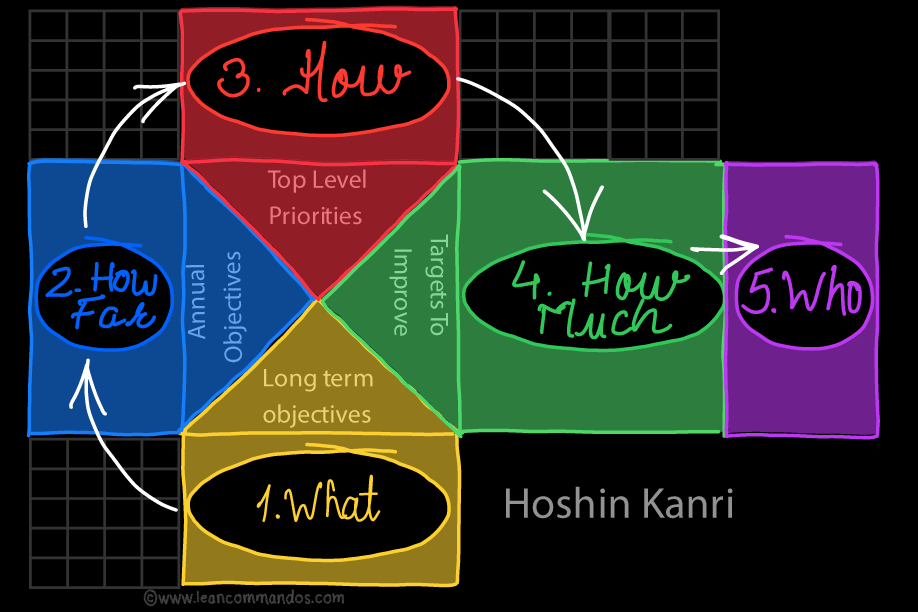
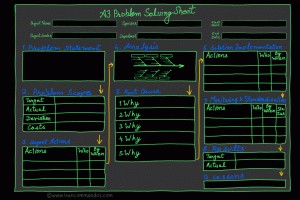
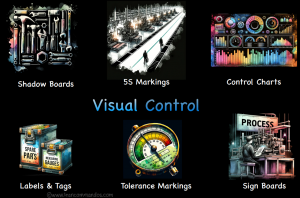
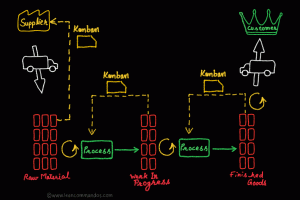
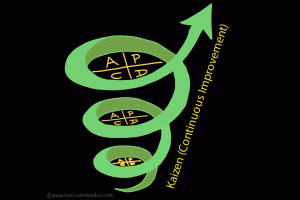

6 Responses
Wow! Thank you! I always needed to write on my website something like that. Can I take a part of your post to my blog?
I’m really enjoying the design and layout of your website. It’s a very easy on the eyes which makes it much more enjoyable for me to come here and visit more often. Did you hire out a developer to create your theme? Excellent work!
wonderful publish, very informative. I’m wondering why the opposite experts of this sector do not notice this. You must proceed your writing. I’m sure, you’ve a great readers’ base already!
Thanks so much for the blog.Really thank you!
I am always browsing online for posts that can assist me. Thanks!
Magnificent goods from you, man. I have remember your stuff previous to and you are simply too great. I actually like what you have obtained right here, really like what you are saying and the way by which you say it. You make it entertaining and you still care for to keep it smart. I cant wait to learn far more from you. That is really a terrific site.